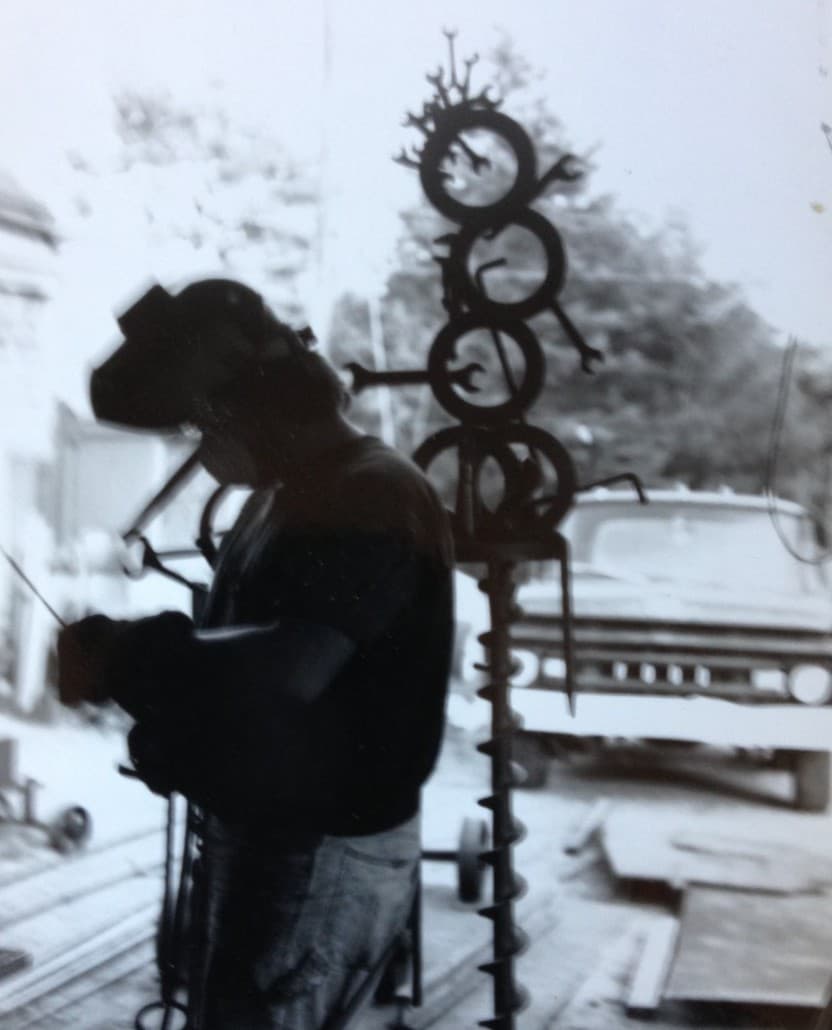Advertisement
The Remembrance Project: Bob Harmon Jr.
ResumeBob Harmon Jr. died April 26 in East Sandwich, Massachusetts. He was 52 years old, a ninth-generation Cape Codder. His illness was swift — not an indolent cancer that offered choices, but a cancer raging from diagnosis to death within months — and it left little time to grapple with mortality. Still, he grappled. “If this is all I get,” he told his wife, “it’s enough.”

Wearing a black towel draped around his neck to catch the sweat of creative efforts, he constructed steel sculptures, delicate glasswork, and even film sets in his studio. He didn’t draw, but visualized so multi-dimensionally that he could walk around his projects in his mind.
One result was the "Electric Bluebird" float for Boston’s First Night; a flatbed trailer with its roof cut away. His family was posed on top (he’d rented a coach to bring everyone up from the Cape), wearing coveralls sewn with thousands of small, blazing lights, and throwing light sticks into the crowd. He’d installed an easy chair for one injured relative, and the dog was illuminated, too.
Family and art were united in every way possible — family was art. For Valentine’s Day one year, Bob gave his wife a box of chocolates, with cut glass tiles nestled into the candy cups, instead of nuts and crèmes. He’d created a series of miniature glass daguerrotypes, and each tile held a scene from the history of their lives together.
The studio where Bob worked and watched over his three children, while his wife worked traditional hours, was directly underneath Cape Cod’s Sagamore Bridge. It was almost like another family member; they held Thanksgiving dinners there and camped in on hot summer nights. Half of it was covered with tricycles and miniature art tables, the other half with machinery, welding equipment, metal, and glass — and the halves were divided by a bunch of oversized slippers.
The kids had to step into a pair of bunnies or bear paws before they could safely cross from their side to his. It was the opposite of taking their shoes off to enter a room — they had to put their animals on.
Bob had a theory about growing up, that seven was the age disbelief begins to set in, and he transformed each child’s threshold birthday into a tableaux. One fairy-loving daughter glanced up from a celebration at dusk, and saw a row of shimmering Barbie dolls across a hill. They were absolutely life-sized from a distance. Another daughter, who believed in unicorns, answered a phone call and found herself running to the town park, right into a breathing icon with golden horn and hooves.
All of it was magic. All of it was what Bob did for them.
Did you know Bob Harmon? Share your memories in the comments section.
This segment aired on January 6, 2015.